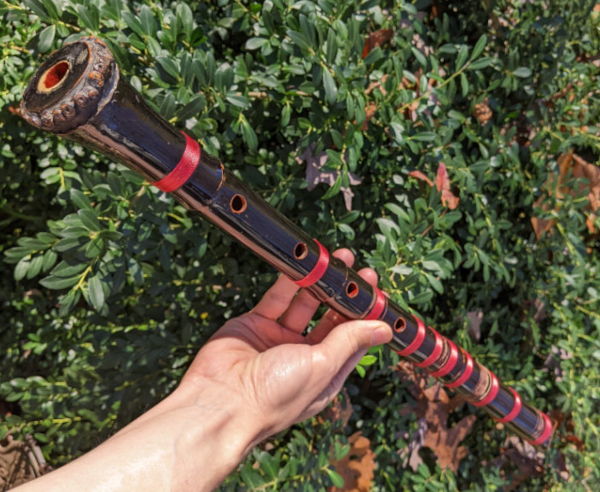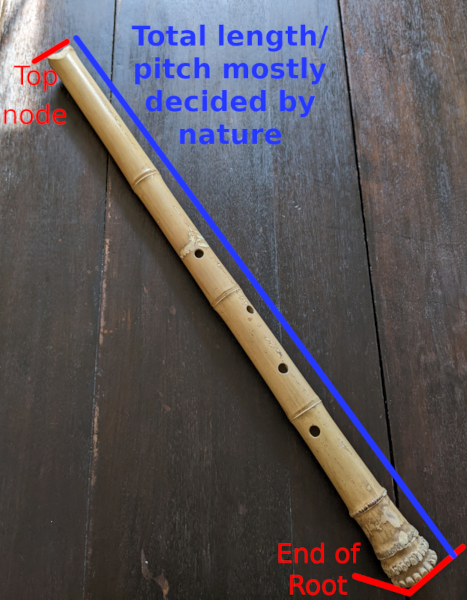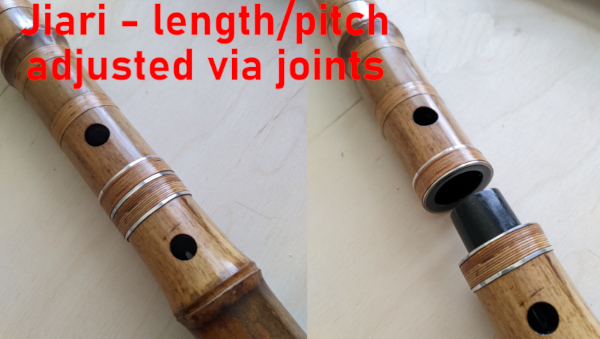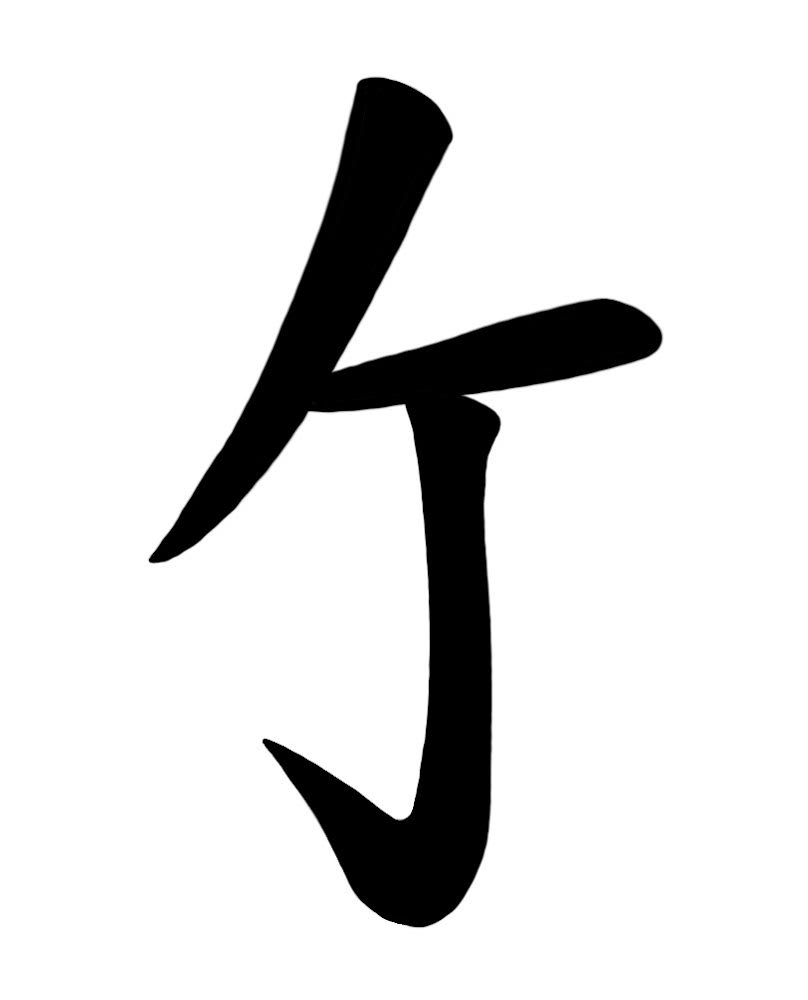Understanding Shakuhachi Pitch and Tuning: 440Hz, 432Hz, and What They Really Mean

Understanding shakuhachi pitch and tuning doesn’t have to be complicated. Much of the confusion arises from conflating the physical length of all shakuhachi with fixed musical keys or definite pitches. Add to this general uncertainty around things like 440Hz, and what it means for an instrument to be in-tune, and it becomes quite a mess. Let’s get clarity on these things and understand how they relate to us as shakuhachi players.
Main takeaways:
- Outside of playing with others, we don’t need 440Hz, or any other specific frequency/pitch. We just need a shakuhachi to be in-tune, which is to say, the finger-holes are in-tune with the pitch of the lowest note Ro, the key.
- Pitch standards like 440Hz and 432Hz only tell us who we can harmonize with. They say nothing of how well an instrument is in-tune.
- (While 440Hz keys and rigid aesthetics command higher prices, in my shop they don’t equal superiority. This is because I uphold the same uncompromising quality with all of my works. Since shakuhachi is largely a solo endeavor, this offers us an infinite array of pitches to explore.)
Length and Pitch: More Than Meets the Eye
While the total length of shakuhachi is a primary factor in determining its pitch or key, it’s not the only one. The instrument’s total inner volume, the style of the blowing edge (utaguchi), and even the size of the bottom opening can all significantly impact pitch. So, how did length become so synonymous with perfect keys tuned to A4=440Hz?
How Shakuhachi Lengths and Keys Became Standardized and Synonymous
During the early 20th century, as Japan modernized, the shakuhachi underwent significant changes. One major change was cutting and joining or jointing. This allowed makers to adjust the length and the pitch of the all-important lowest fundamental note, Ro, aka the key (to which all other finger-hole notes are subsequently tuned). While cutting and joining for specific lengths existed earlier in the Edo period, it was rare and not primarily done for achieving exact pitches. Jointing, combined with the complete sculpting of the bore (known as Jiari or Jinuri), made lengths essentially synonymous with specific keys or pitches.
Nobékan (延べ管) “One-Piece” Shakuhachi: Nature’s Voice and Beauty
How this effects pitch (and my pricing)


As shown in the image above, unlike jointed shakuhachi, the total length and resulting pitch for a nobékan “one-piece” shakuhachi is largely determined by nature. Specifically, the natural distance between the topmost node, where the blowing edge is formed, and the bottom roots. Conversely, some instruments, such as the Jiari pictured above, feature a center joint. As we discovered earlier, joints allow craftsperson to adjust the final length, and thus the pitch of the key. In modern times, this almost exclusively entails adjusting to 440Hz.
To some extent, jointing also allows makers to change where the finger-holes will fall, such as avoiding landing on nodes, and thus striving for the rigid aesthetic. (Note: Some instruments may appear one-piece but can have hidden joints beneath inlaid rattan binding wraps. While more rare, some Jinashi or Jimori may also occasionally feature joining work, both visible and hidden.)
However, 440Hz keys are only needed if you’re playing with other people with 440Hz instruments. Of course, sometimes nobékan, like those I primarily craft, naturally work out to a 440Hz key as well.
Understanding Pitch Standards: Arbitrary Measurements of Sound
Now, let’s clarify what a pitch standard is. Like measuring length, speed, or temperature, the units and names we use are arbitrary; they hold no inherent meaning and are entirely relative. If you’ve ever made the switch between Fahrenheit and Celsius, or learned a new language, you understands this firsthand.
Hertz (Hz) is also an arbitrary measurement, but of sound wave oscillations: how rapidly sound waves vibrate in the air per second. We perceive the speed of oscillation as higher or lower pitched sounds. 440, 432, 150, are all simply the number of vibrations per second. So, what does “A=“ mean, and why “A”?
Why “A=” 440Hz, 432Hz, and so on…
The answer to why “A4” lies in the physical construction of orchestral string instruments. Violins, violas, and cellos all share an ‘A’ string. This commonality provided a simple and effective reference point for tuning the entire string section, which forms the backbone of the orchestra. The open ‘A’ string offered a clear, resonant, and easily accessible pitch for all string players to match.
Historically, different cultures debated and adopted various frequencies for this ‘A’. Eventually, 440Hz became a widely accepted standard sound to call “A”, partly influenced by the desire to accommodate vocal ranges within ensembles. While 440Hz being A4 became the dominant standard, some orchestras and historical performance groups still use slightly different frequencies for A (e.g., 432Hz, 435Hz, 442Hz, 444Hz), as dictated by specific musical styles or acoustic reasons.
What Tuning Really Means
To tune a musical instrument means to harmonize its various notes as much as possible. When done, an instrument is in-tune with itself. However, when instruments play together they must also be in harmony with one another. For instance, if instrument X is tuned where A4 was said to be 440Hz and instrument Y was tuned where A4 was said to be 432Hz, then these two instrument will not be able to harmonize without retuning.
How This All Relates to Shakuhachi Practice
So, what should we do as shakuhachi players? If we need to play along with others, such as our teacher, naturally we need a shakuhachi that will harmonize with them. Most often this means we need a shakuhachi with a Ro pitched where A4=440Hz. However, outside of playing with others, we don’t need 440Hz, or any other frequency standard. We just need a shakuhachi to be in-tune with itself, which is to say, the finger-holes are in tune with the pitch of the lowest note Ro, the key. Since shakuhachi is largely a solo endeavor, this opens up a world of unique pitches to enjoy, or what I often call, the myriad voices of nature.

